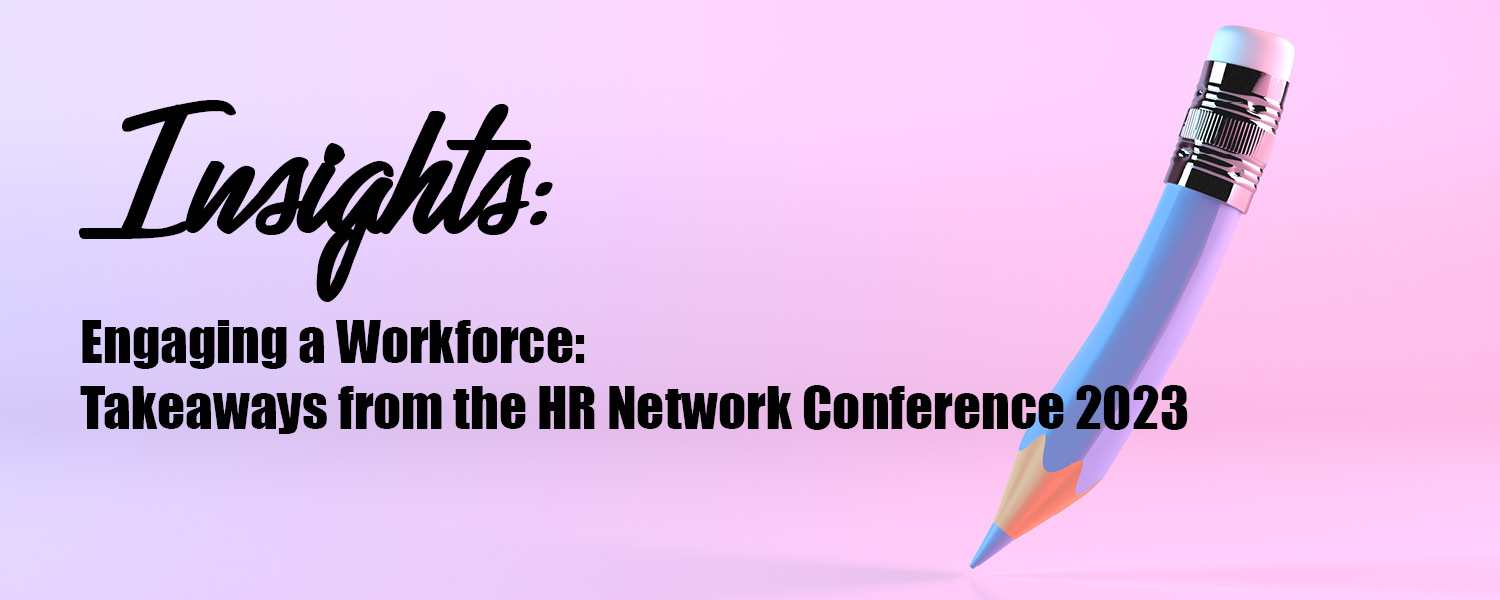Our Senior Recruitment Advisor Laura Brownhill recently attended the annual HR Network Conference in Edinburgh this year, based on the theme ‘People-First Culture’. The Keynote session from culture and engagement specialist Fiona Passantino really resonated with her, and she felt inspired to summarise her takeaways here.
It was a pleasure to be down in Edinburgh recently for the HR Network Conference at Murrayfield Stadium. The theme, ‘People-First Culture’, was topical, and the line-up of speakers and fellow delegates alike was excellent. All in all, it was a great day and I look forward to returning next year.
One of the keynote sessions, ‘Engaging a Workforce’ with Fiona Passantino, stuck with me in particular; and I’ve been reflecting on it ever since. Fiona spoke of the shift the employment landscape is currently experiencing, known to many as ‘the great resignation’. Fiona explained that according to Gallup, this trend has been brewing since 2009, and the statistics behind it are quite telling.
Research by Gallup indicates that 40% of employees are experiencing burnout, 20% feel undervalued, 40% seek more flexibility to work from home, and a staggering 28% have left jobs without a new one lined up; simply because they were unhappy.
Sitting within the Recruitment Team at Hunter Adams, it struck me that these statistics are very much being reflected in conversations we are having daily with our candidates, many of whom are looking to leave current roles and employers.
During her session, Fiona explored what might help foster engagement and drive positive change within the workforce. She singled out eight fundamentals that most employees tend to seek from an employer. These were:
- Flexibility
- Stability
- Growth
- Community
- Ownership
- Inspiration
- Recognition
- Fun
At Hunter Adams, during our early conversations with candidates and prospective jobseekers, we always seek to understand not only reasons for an individual leaving their current employer but also to identify what factors are key for them in a new opportunity, organisation and culture. Certainly, in recent times, we’ve seen candidates placing increased emphasis on finding an employer that can offer them flexibility. However, I was also able to relate to each of the other factors listed above as we generally see trends in these categories when discussing candidate/employee ‘wants’.
I’ve summarised my five key takeaways from Fiona’s session below. In a nutshell, I think these are the things that would help leaders to create a working environment where teams would feel empowered, motivated and committed to their work.
Listen
Creating a space for open communication is essential. It’s not enough to have one-way messaging; we must build listening channels to truly understand our employees’ needs and concerns. Implement tools beyond traditional communication methods, such as weekly, monthly or quarterly pulse surveys and annual deep dives. By actively listening to our teams, we demonstrate that their voices matter and their opinions are valued.
Reduce
Burnout rates have been on the rise, reaching 62% in 2020 and 67% in 2021. To combat this, leaders must take a proactive approach to consciously reducing workloads. This requires top-level buy-in and championing from leadership. By acknowledging the strain on employees and actively working towards workload reduction, we can create a healthier and more sustainable work environment.
Flow
Achieving a state of “flow” is crucial for optimal performance. In digital (remote) work environments, distractions can hinder concentration, control, and productivity. To support our teams in reaching a state of flow, we can implement practices such as a meeting-free day, dedicated time for focused work, and shorter meetings of 45 minutes instead of typical hour-long sessions.
Fun
Don’t underestimate the power of fun in the workplace. Encourage team-building activities, celebrate milestones and achievements, and create an environment where laughter and enjoyment are welcomed. When employees feel a sense of joy and camaraderie, they become more engaged and motivated to contribute their best work.
Purpose
Establishing a shared goal is essential for connecting and inspiring your teams. Clearly articulate the purpose behind the work they do, highlighting how it contributes to the organisation’s larger mission. When employees understand the impact of their efforts, they are more likely to feel a sense of purpose and fulfilment in their roles.
By incorporating these five things, business leaders can create an environment that addresses the wants and needs of today’s employees, whilst also fostering their professional growth and wellbeing.
Laura specialises in Interim HR roles across Scotland. Get in touch with her at laura.brownhill@hunteradams.co.uk



